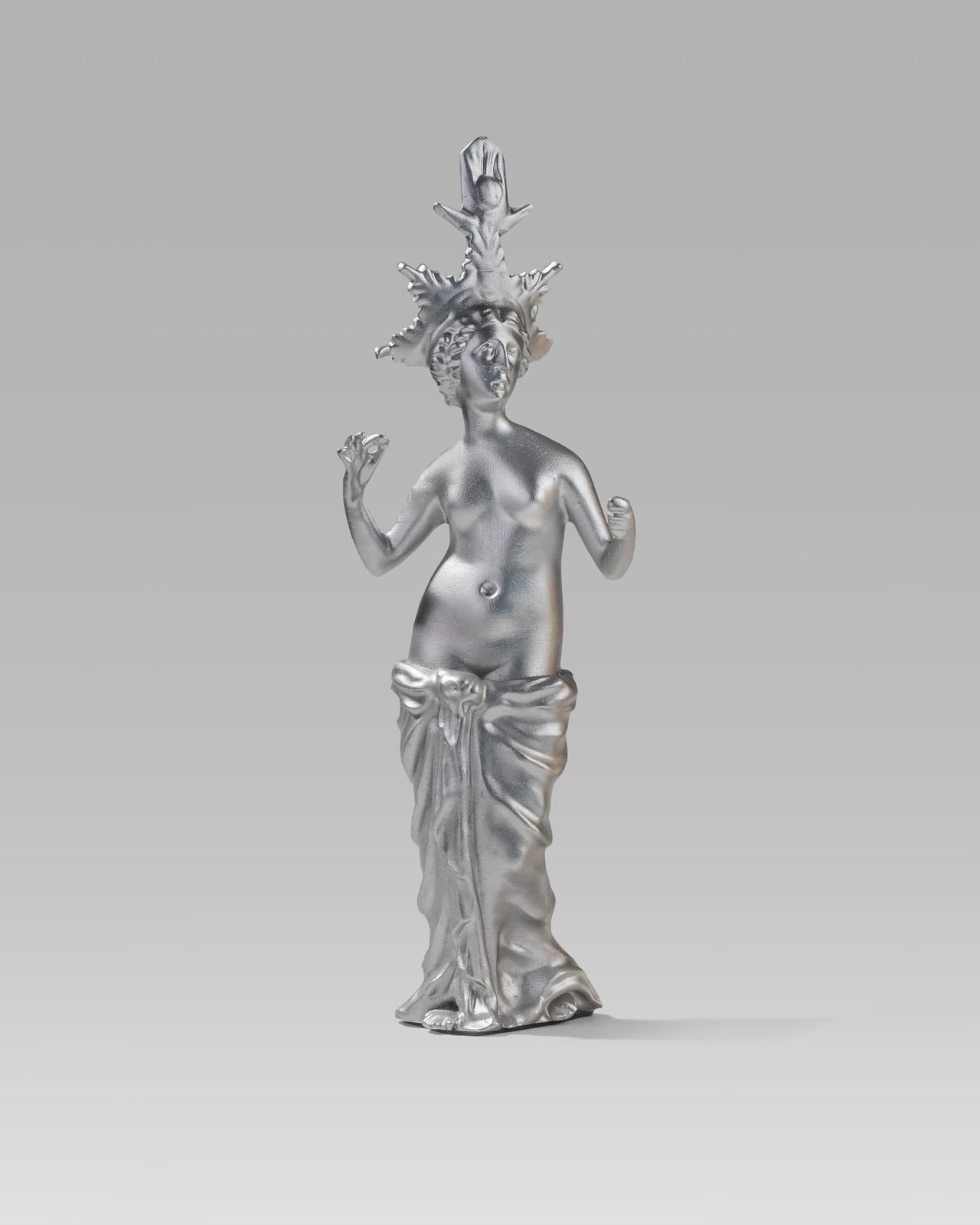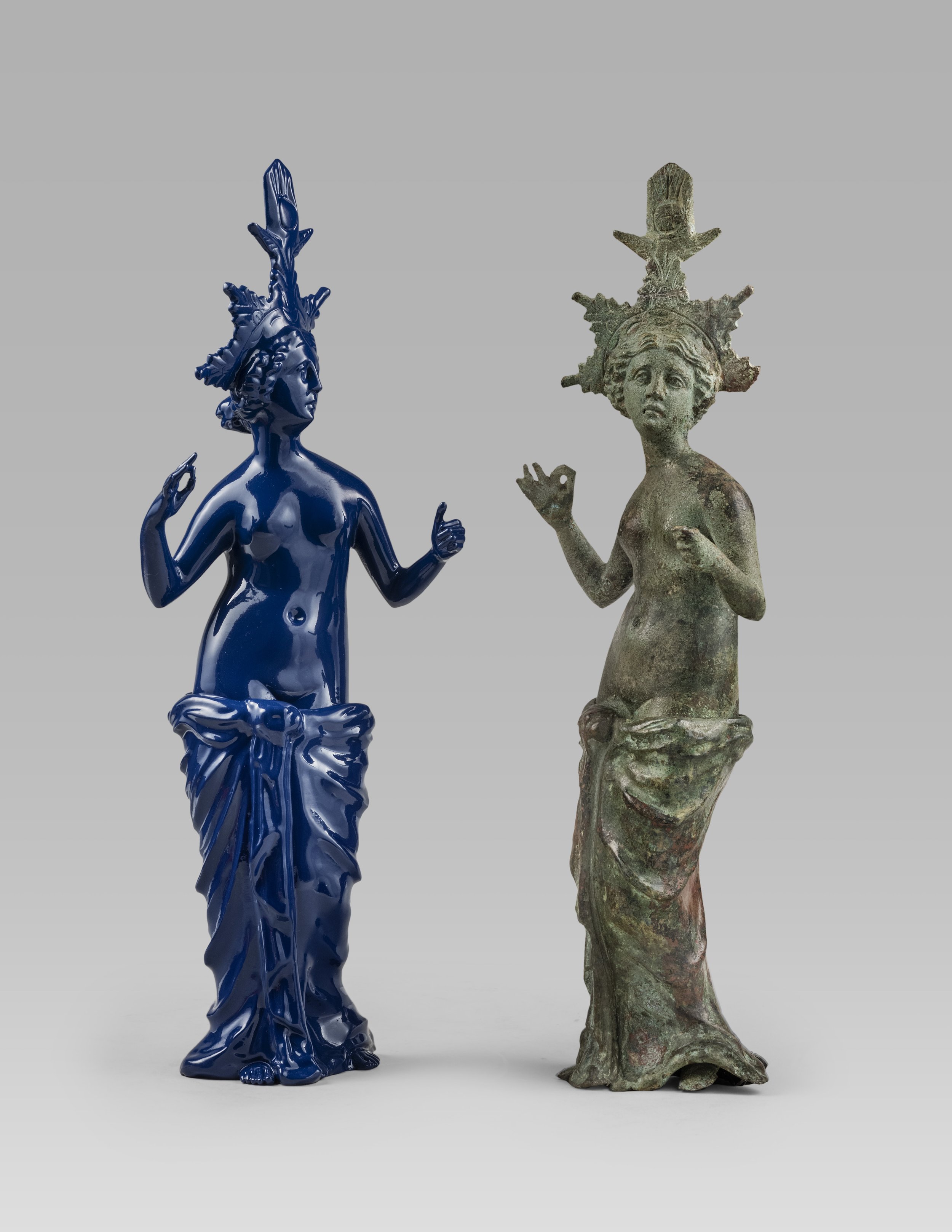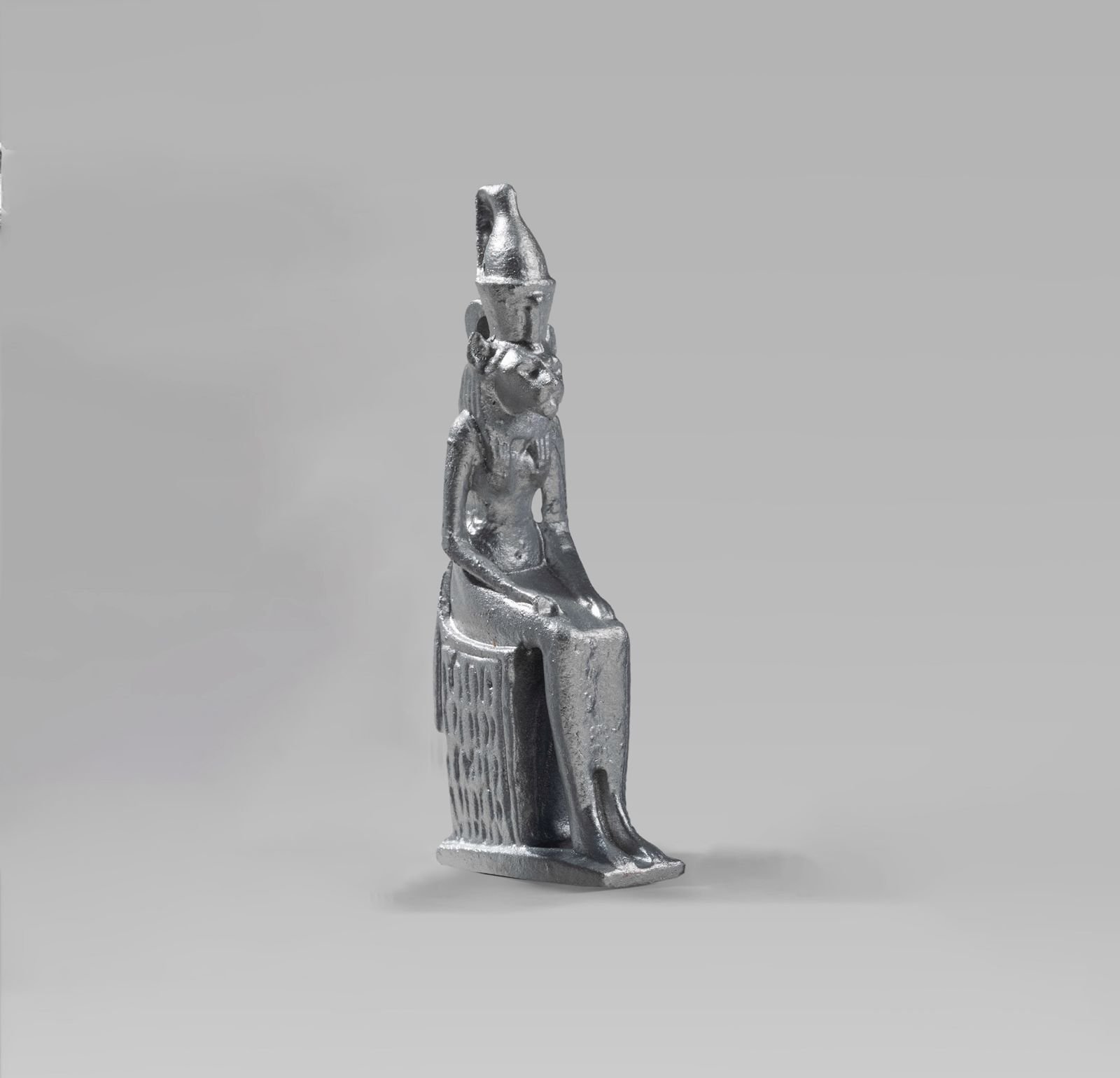 Image 1 of 2
Image 1 of 2

 Image 2 of 2
Image 2 of 2



Hematite Torso of Apollo
This hematite-toned polyresin contempo offers volcanic and metallic flair to the piece. Its lustrous sheen reflects brillianty off light, giving Roman torsos an entirely new style.
The original, ancient marble torso is Roman, ca. 1st century B.C. - 1st century A.D. This statue was most likely commissioned by Roman patrons to decorate their houses and villas; the statue of Apollo might be appropriate for the installation in a house library or a family shrine.
Apollo, the Greek god of prophecy and oracles, music, archery, healing, disease, and protection of the young, was often depicted as young, athletic, and beardless. The statue was created in the Classicist style that emphasizes simplicity, aesthetic proportions, and harmony.
This hematite-toned polyresin contempo offers volcanic and metallic flair to the piece. Its lustrous sheen reflects brillianty off light, giving Roman torsos an entirely new style.
The original, ancient marble torso is Roman, ca. 1st century B.C. - 1st century A.D. This statue was most likely commissioned by Roman patrons to decorate their houses and villas; the statue of Apollo might be appropriate for the installation in a house library or a family shrine.
Apollo, the Greek god of prophecy and oracles, music, archery, healing, disease, and protection of the young, was often depicted as young, athletic, and beardless. The statue was created in the Classicist style that emphasizes simplicity, aesthetic proportions, and harmony.
This hematite-toned polyresin contempo offers volcanic and metallic flair to the piece. Its lustrous sheen reflects brillianty off light, giving Roman torsos an entirely new style.
The original, ancient marble torso is Roman, ca. 1st century B.C. - 1st century A.D. This statue was most likely commissioned by Roman patrons to decorate their houses and villas; the statue of Apollo might be appropriate for the installation in a house library or a family shrine.
Apollo, the Greek god of prophecy and oracles, music, archery, healing, disease, and protection of the young, was often depicted as young, athletic, and beardless. The statue was created in the Classicist style that emphasizes simplicity, aesthetic proportions, and harmony.
Original Ancient
Roman, 1st century B.C. - 1st century A.D.
Marble
H: 77 cm (30 in)
Contempo
2025
Polyresin, Hand-Painted
H: 30cm (11.2 in)







